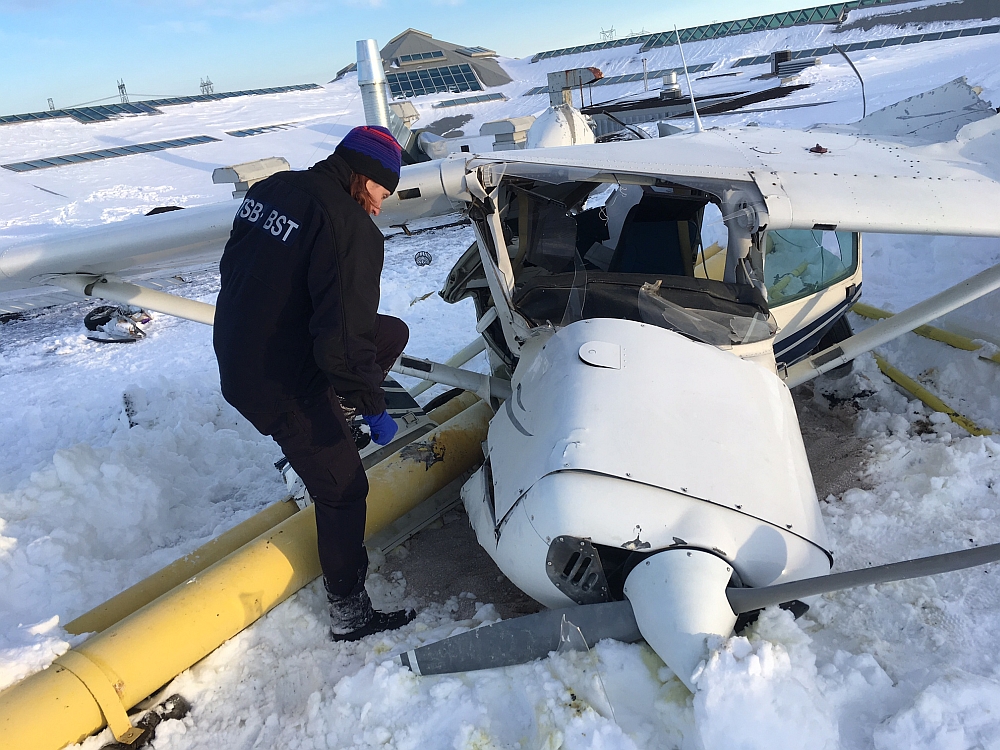Mid-air collision
Cargair Ltd., Cessna 152, C-GPNP
and
Cargair Ltd., Cessna 152, C-FGOI
Montréal/St-Hubert Airport, Quebec, 1.7 nm ESE
The occurrence
On March 17, 2017, two Cessna 152 from Cargair Flying School, with a pilot on board each aircraft, were operating training flights from the St-Hubert airport, Quebec. During the flight, both aircraft collided and crashed at the shopping mall in St-Bruno, Quebec. One pilot suffered fatal injuries and the other pilot was seriously injured.
Media materials
News release
Non-adherence to altitude restrictions and limitations to the see-and-avoid principle contributed to the March 2017 mid-air collision near the Montréal/St-Hubert Airport, Quebec
Read the news release
Backgrounders
Investigation findings for TSB investigation A17Q0030 Mid-air collision near Montréal/St-Hubert Airport, Quebec, March 2017
Read the backgrounder
Deployment notice
TSB deploys a team of investigators to Saint-Bruno-de-Montarville, Quebec, following mid-air collision between two aircraft
Dorval, Quebec, 17 March 2017 - The Transportation Safety Board of Canada (TSB) is deploying a team of investigators to Saint-Bruno-de-Montarville, Quebec, following a midair collision between two Cessna 152 aircraft operated by Cargair. The TSB will gather information and assess the occurrence.
Investigation information
Download high-resolution photos from the TSB Flickr page.
Class of investigation
This is a class 2 investigation. These investigations are complex and involve several safety issues requiring in-depth analysis. Class 2 investigations, which frequently result in recommendations, are generally completed within 600 days. For more information, see the Policy on Occurrence Classification.
TSB investigation process
There are 3 phases to a TSB investigation
- Field phase: a team of investigators examines the occurrence site and wreckage, interviews witnesses and collects pertinent information.
- Examination and analysis phase: the TSB reviews pertinent records, tests components of the wreckage in the lab, determines the sequence of events and identifies safety deficiencies. When safety deficiencies are suspected or confirmed, the TSB advises the appropriate authority without waiting until publication of the final report.
- Report phase: a confidential draft report is approved by the Board and sent to persons and corporations who are directly concerned by the report. They then have the opportunity to dispute or correct information they believe to be incorrect. The Board considers all representations before approving the final report, which is subsequently released to the public.
For more information, see our Investigation process page.
The TSB is an independent agency that investigates air, marine, pipeline, and rail transportation occurrences. Its sole aim is the advancement of transportation safety. It is not the function of the Board to assign fault or determine civil or criminal liability.
